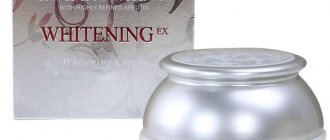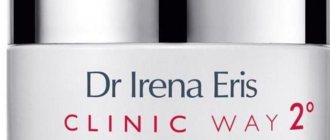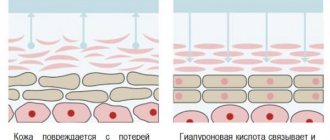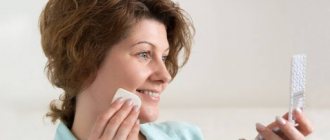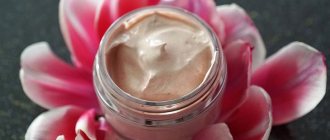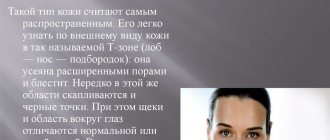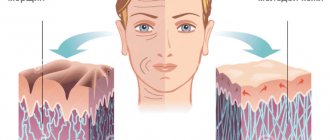Pigmentation on the body is a fairly well-known problem. Many girls turn to cosmetologists and dermatologists asking for help. Indeed, such spots on the body are abnormal and also not aesthetically pleasing. The reasons for the appearance may be different: strong exposure to ultraviolet rays - tanning appears in the form of spots, hormonal imbalances after 50 years, pregnancy, metabolic disorders, disruption of the normal functioning of the body and poor nutrition. This problem also often occurs in those with sensitive skin and in older people who are often exposed to the sun. Therefore, you need to use creams for pigmentation on the face, a list of the best of which is presented in this article.
Manufacturers of whitening creams
One of the important criteria for choosing cosmetics is the reputation of the manufacturer. Vyborexperta.ru has selected brands whose products you can trust:
- Himalaya Herbals is a company whose main focus is organic cosmetics. The brand was created in 1930. All components for it are collected in the Himalayas and forests of South India. Each brand product is aimed at helping people live a healthy life.
- Kora is Russian-made natural cosmetics. The quality is not inferior to foreign analogues, and the prices for the products are much lower. The manufacturer offers 3 lines: professional products for salons, pharmacy phytocosmetics, middle class for home use.
- Medoveya is a Russian brand that offers natural cosmetics, food products, and medicines based on honey. The company's catalog contains 800 items.
- Natura Siberica – natural herbal cosmetics. The company conducts regular expeditions in search of the best components. Buyers value the brand's products primarily for their effectiveness, organic composition, and affordable prices.
- Secret Key is a South Korean brand whose products combine proven ancient recipes and modern technologies. Since 2010, the company has been developing cosmetics in its own laboratory, which has allowed it to reach global sales levels. The brand's signature ingredients include snail mucus, snake venom, honey, and pearl powder.
- Bergamo – Korean luxury cosmetics. The company appeared in 2006, named after the Italian city. The brand operates under the motto “Shine from within” and develops new technologies to tighten and firm the skin. The products are based on exotic plant components.
- Elizavecca - offers cosmetics that combine naturalness with effectiveness. The company was born in 1986 in Korea. The brand's calling card is products based on pork skins.
- Mi& Ko is a Russian company that appeared 10 years ago. Today its products are presented in 14 countries. Cosmetics are based on natural ingredients. The company sets an example of social entrepreneurship, transfers funds to several foundations and offers jobs to people in difficult situations.
- Clearwin is a Russian company founded in 2010 that produces hygiene products and cosmetics. In factories with European equipment, 6 tons of various products are produced daily. Each batch produced is strictly controlled for compliance with the standard and quality.
- Dina+ is a cosmetics manufacturer located in the Moscow region. The company was created in 1993 in collaboration with the French brand Dina Cosmetics France. The brand began producing its own line of cosmetics in 1998. Today it has at its disposal more than 500 unique formulations of cosmetics for various purposes.
The best men's face creams
Types of Sanskrins
Sunscreen cosmetics are available in different forms:
- lotions;
- creams;
- sticks, lipsticks;
- gels;
- oils;
- pastes;
- sprays;
- mousses.
Sanskrins in the form of cream and cream mousse
The method of using Sanskrin varies depending on the form. For example, the spray should not be sprayed on the face. Therefore, always read the instructions on the label.
Please note that the FDA does not confirm the effectiveness of Sanskrins in the form of wet wipes, powder, liquid soap and shampoo.
Rating of whitening face creams
The choice of cosmetic products depends primarily on the individual characteristics of the skin. For people with problematic epidermis, it is important not to aggravate existing problems. Those with flaky, dry skin need not only whitening, but also hydration of the deep layers of the epidermis. For oily film, a mattifying effect is needed.
When compiling the rating, VyborExpert specialists studied the characteristics of whitening products for different skin types offered on the market, reviews of professionals, opinions of cosmetologists, and customer reviews. When comparing products and adding them to the TOP of the best, the following criteria were taken into account:
- Compound;
- Speed of results;
- Depth of action;
- Volume, ease of packaging;
- Combination of price and quality;
- Availability in stores.
The naturalness of the lightening composition is also important. Many buyers try to avoid synthetic additives and opt for organic cosmetics.
The best facial scrubs
Features of the composition
Age spots include moles and freckles iStock
Anti-pigmentation creams usually contain acids, plant extracts and vitamins. High positions in the ranking of ingredients are occupied by:
Salicylic acid promotes the exfoliation process, making spots less noticeable.
Glycolic acid with a powerful exfoliating and whitening effect helps reduce pigmentation and rejuvenate the skin.
Ferulic acid increases the activity of vitamin C, the most effective component in whitening cosmetics.
Alpha hydroxy acids (fruit, lactic) have an exfoliating effect and are used to correct surface pigmentation.
Ellagic acid normalizes excess melanin synthesis.
Kojic acid reduces the production of tyrosinase, an enzyme responsible for the synthesis of melanin. Fights free radicals, suitable for sensitive skin.
Retinol (vitamin A) helps in skin regeneration and even distribution of melanin.
Vitamin C regulates melanin synthesis, is a powerful antioxidant, and stimulates collagen production.
Arbutin is similar in action to hydroquinone (this powerful bleaching agent with high toxicity is prohibited for use in many European countries and Russia), slows down the synthesis of melanin.
Best Korean Face Whitening Creams
Korean cosmetics offers the most effective lightening products. It may be expensive, but the results are worth it. VyborExpert specialists studied 15 creams from different brands, among which they chose the three most effective.
Secret Key Snow White Cream
An excellent Korean face whitening cream with a delicate airy texture. Not greasy, absorbs well, leaves no streaks. In just a few days of use, the face becomes noticeably brighter, the pores are cleaned and narrowed, and blackheads disappear. The product contains milk proteins, which accelerate collagen synthesis in tissues and cell division. As a result, the skin is more elastic, the contour becomes tightened and clear.
Vitamin B3 is responsible for the brightening effect. It also increases the resistance of the epidermis to negative external influences. Furrow enzyme slows down the synthesis of melanocytes, which enhances whitening. Betaine is a moisturizing ingredient that gives the skin a pleasant velvety feel. With regular use of the cream, hyperpigmentation disappears, the tone is evened out, the epidermis is saturated with microelements and moisture. Rejuvenating and regenerative processes are accelerated. The cream can be used to prevent aging at any age. The composition is sold in a 50 ml jar with a screw cap. The set includes a spatula for a hygienic set of products.
Advantages
- Reduces wrinkles;
- Economical;
- Virtually odorless;
- Quick results.
Flaws
- Not everyone likes the smell;
- On dark skin it looks like a mask.
The Secret Key product needs to be rubbed into the epidermis for a long time. You cannot leave it to absorb naturally - it will leave whitish stains. You also need to make sure that the composition does not get on your eyebrows.
Bergamo Moselle Whitening EX Whitening Cream
The best anti-aging cream with whitening effect in the rating. Shea and olive leaf oils deeply nourish and moisturize the skin. Research has shown that allantoin promotes wound healing. A proprietary complex of plant extracts prevents the production of melanin, prevents pigmentation, brightens the dermis, and eliminates dullness. Hyaluronic acid intensely moisturizes, fills voids in the layers of the skin, and reduces wrinkles that have formed from lack of moisture.
After just a few days of use, the cream reduces freckles, spots, and redness. The face acquires an even, beautiful shade and looks fresh. The cream spreads easily over the skin, is quickly absorbed, and does not leave a greasy or sticky film. The light cosmetic scent does not remain on the skin.
Advantages
- Pleasant consistency;
- Beautiful packaging;
- Quick visible results;
- Leaves skin soft and moisturized.
Flaws
- Expensive (1300 rubles for 50 g);
- Unnatural composition.
It is recommended to apply Bergamo brightening cream at night. After use, a slight burning sensation may be felt, but it goes away quickly. During the day, you need to apply a composition with a strong sunscreen filter.
The best masks for acne
Elizavecca Skin Liar Moisture Whitening Cream
The most effective whitening face cream according to customer reviews. The composition includes niacinamide, which quickly brightens the dermis. It reduces pigmentation, fights dull color, and restores the natural radiance of the skin. Hyaluronic acid saturates cells with moisture, removes flaking or dryness, accelerates cell division, and restores the youth of the epidermis. Shea butter smoothes out uneven microrelief and saturates the skin with fatty acids. Goat's milk softens the dermis. A proprietary herbal complex with aloe, alba bark, cinnamon, avocado and other extracts enriches cells with vitamins and amino acids.
Advantages
- Fragrance free;
- Light texture;
- Minimum consumption;
- Fights signs of aging;
- Suitable for daily use.
Flaws
- Not suitable as a base for cosmetics.
The cream quickly brightens. Some users note that the effect is even too pronounced. The face becomes white, like a geisha's. For even faster results, you can use a scrub before using the product.
Stop on time
Once all spots, freckles and acne marks are removed, stop using the cream. At the very least, take a fairly long break after 2-3 weeks of whitening. Of course, you also need to take into account your skin type: for oily skin, you need to do it every other day, while dry skin will last no more than 2 times a week. The principle “everything is good in moderation” applies here unquestioningly.
Top 5 proven creams
- Dark Spot Correcting Cream from Chanel (Precision Anti-Taches lightening product series). In addition to vitamins A and C, the composition contains narcissus bulb extract, licorice extract and moisturizing components.
- Garnier "Power of the Orchid". Whitens and regenerates the skin. Suitable for women over 50 years old.
- AgeRe-PerfectPro-Calcium from L'Oreal - restores, moisturizes, nourishes and whitens mature skin, saturating it with calcium.
- “Color Shine” with licorice and mulberry from Green Mama – plant-based product (grape seed oil, nasturtium). The whitening effect is more noticeable due to glycerin and aluminum dioxide in the composition.
- “Active Whitening Cream” from Eveline is one of the most affordable options that does its job despite the low price.
The best whitening face creams in the pharmacy
Pharmacy products work more efficiently than regular store-bought ones. Lightening creams are no exception to this rule. The ChoiceExpert team studied the range of formulations offered by pharmacies and selected the 3 best from them.
Mi&Ko Chamomile and Lemon night whitening
A good night cream that whitens the skin. The composition of the product is completely natural. Vegetable glycerin moisturizes. Sea buckthorn and cranberry heal wounds and soften the epidermis. Macleaia, nettle, neem, and sage give the cream bactericidal and antifungal effects. Chestnut extract improves blood microcirculation and strengthens blood vessels. Viburnum and slander are responsible for whitening and fight age-related changes.
Chamomile and parsley soothe the skin. Licorice and primrose relieve irritation, fight pigmentation and post-acne spots. Collagen has a rejuvenating, softening, moisturizing effect. With regular use, the skin noticeably brightens, freckles, age spots, and post-acne decrease. The face is moisturized, wrinkles become less pronounced.
Advantages
- Convenient dark glass bottle with dispenser;
- Nice texture;
- Low consumption;
- Quickly absorbed.
Flaws
- Not everyone likes the smell.
After applying Mi&Ko cream, the skin is soft, soft, smooth, and velvety to the touch. She is hydrated and nourished. Thanks to the large number of extracts in the composition, the surface of the skin becomes more elastic and firm. The composition does not clog pores and does not provoke inflammation. The skin breathes, the tone is evened out.
Clearvin
A good inexpensive pharmacy cream for freckles, according to ChoiceExpert. The action of the product is based on plant components. Propolis restores youth to the dermis and makes it more elastic. Titanium dioxide protects against UV rays. Beeswax is a source of retinol. Lanolin accelerates cell division and saturates the epidermis with moisture. Calamus enzyme affects collagen synthesis and accelerates whitening. Madder eliminates pigmentation and signs of post-acne.
Neem leaves have a cleansing and moisturizing effect, restore freshness, and also even out the complexion and restore after sunbathing. Turmeric has antibacterial properties, rejuvenates the dermis, and evens out color. Aloe prevents the formation of wrinkles. Ascorbic acid is responsible for lightening and acts as an antioxidant. Malic acid gently exfoliates dead skin cells.
The cream penetrates deeply into the layers of the epidermis, moisturizes, inhibits melanin synthesis and prevents the appearance of wrinkles. Freckles, spots, dull color disappear. A healthy glow appears. The face looks clean and healthy.
Advantages
- Low price (from 190 rubles per 100 ml tube);
- Pleasant aroma;
- Economical;
- Pronounced quick results.
Flaws
- May cause allergies;
- Stains clothes.
It contains many herbal ingredients that may cause irritation or other negative reactions. It is recommended to conduct an allergy test: apply a little cream to an inconspicuous area of the body. If no rash or redness appears, the product can be applied to the face.
Badyaga Forte
The product is one of the best whitening face creams in the budget segment. The gel acts due to the mechanical action of crushed needles of the badyagi skeleton on the skin. This activates microcirculation and provides a resolving and antibacterial effect. During application, a thermal effect is felt and redness appears. It goes away quickly.
Yarrow and plantain enzymes soften, moisturize, and heal. The composition should be applied to the face for 15-20 minutes, then rinsed with water. A mandatory condition for use is not to go outside for 2-3 hours after the procedure.
Advantages
- Suitable for frequent use;
- Budget (100 rubles);
- Tightens pores;
- Regulates the functioning of the sebaceous glands.
Flaws
- Not recommended for dry or irritation-prone skin;
- May cause allergies.
The composition is used not only to lighten freckles and age spots. It is also good to apply for bruises, acne, as a product with a rejuvenating and exfoliating effect.
Tips for choosing a drug for skin pigmentation
To choose the right cream against age spots, you need to follow the following rules:
- Before purchasing, you can determine how much oil is in the cream. To do this, you need to apply a little product on a sheet of paper. If there is a visible greasy stain, it means there is a lot of oil.
- Also, if a stain from this cream on paper has changed its original color, chemical dyes are present. They can cause side effects and allergic reactions.
- Before purchasing, you need to do a test for allergic reactions. To do this, simply apply the product to a small area of skin and wait a day. If no allergens are identified, the cream is safe.
- You need to choose a product exclusively for your skin type.
- For oily skin, choose products with a mattifying effect and particles that normalize the functioning of the sebaceous glands: salicylic and hyaluronic acids, talc, kaolin, glycerin, string extract, chamomile, aloe. Olive and castor oils, tea tree oil, ceramides, panthenol, citric acid, retinol and caffeine.
- Dry skin needs protection and hydration, so you should pay attention to products with a moisturizing effect. Ingredients: glycerin, purified thermal water, panthenol, animal fats, hyaluronic acid.
- For a normal type of epidermis, you need to choose creams with aloe extract, vegetable oils and antioxidants.
- For those with combination skin, it is better to choose creams with additional components: vitamins A, C, E, raspberry, chamomile, calendula, mint, and sage extracts. If the composition contains hyaluronic and salicylic acids, this is only better.
- Sensitive skin needs anti-inflammatory and antioxidant effects. Ingredients: panthenol, chamomile extract, aloe, calendula, thermal water, vitamin A.
- Buy only certified product.
- Do not take a product that contains hydrochion at a concentration of 4% (the use of 2% of the substance is allowed).
- You should not take the cream if it contains hydroichon and is stored for two years.
Which face whitening cream is best?
When the question arises of what cream to whiten your face with, it is best to consult a cosmetologist who will recommend a product based on your skin type, its characteristics and the amount of pigmentation. When purchasing, you need to check the quality certificate, a mention of which should be on the packaging. It is especially important to study the composition of the product. Mineral oils, sulfates, parabens and other harmful ingredients clog pores, leading to inflammation or breakouts on the skin. It is better if the product is natural or marked as hypoallergenic. Among the facial whitening products for age spots, the following are recognized as the best:
- Himalaya Herbals is an organic composition to even out the complexion. It helps with pigmentation and gets rid of dark circles under the eyes.
- Kora Phytocosmetics is a good moisturizer that helps lightly whiten your face. The active plant complex fights pigmentation and prevents the appearance of new spots.
- Snow White Cream from Secret Key is a cream that brightens and tightens the contour of the face.
- Moselle Whitening EX Whitening Cream from Bergamo is a whitening product with a rejuvenating effect.
- Skin Liar Moisture Whitening Cream from Elizavecca is the most effective lightening cream in the TOP. It quickly turns the skin white.
- Night cream from Mi&Ko - makes the skin velvety, moisturizes and saturates it. The product is completely natural.
- Clearwin is a budget cream that gets rid of freckles with the help of herbal ingredients. It quickly makes your face clean and your skin healthy.
- Badyaga Forte is a good pharmaceutical remedy for lightening pigmentation or bruises.
It is better to choose a composition with a complex effect. It should not only brighten, but also moisturize or rejuvenate. This composition allows you to save on cosmetics.
conclusions
- Pigment spots can appear due to sunlight, disruption of the normal functioning of the body, stress, and poor nutrition.
- Melanin is the hormone responsible for the appearance of age spots.
- There are many different creams for age spots. Each one needs to be chosen for its own skin type.
- Popular brands are Natura Siberica, Nivea, Avene, Vichy.
- Hydrochion is a toxic substance.
- Whitening creams have restrictions on use and side effects.
- It is imperative to buy only a certified product.
- It is prohibited to use expired product.
Sunscreens outside the USA
In the USA, Sanskrins are considered medicines and therefore fall under FDA regulation. In Europe, including Russia, sunscreens are classified as cosmetics. Therefore, they do not undergo clinical trials, and their circulation is not regulated by medical authorities.
In my opinion, residents of Russia should buy sunscreen not in the cosmetic departments of supermarkets or in specialized cosmetic stores, but in pharmacies. This reduces the likelihood of purchasing an ineffective product that only claims sun protection on the label for marketing purposes.
Skin lightening and whitening products
First, we will look at drugs used in medicine to treat skin hyperpigmentation, which are also used for whitening.
Hydroquinone is one of the most commonly used drugs to treat skin hyperpigmentation. In the United States, hydroquinone is available as over-the-counter whitening creams at 2% strength and as prescription medications containing 1.5–4%. This is a small hydrophilic molecule that effectively penetrates human skin, with up to 43% of the injected substance reaching the circulatory system. Hydroquinone acts by inhibiting the enzymatic oxidation of tyrosine to 3,4-dihydroxyphenylalanine (DOPA). Hydroquinone acts as an effective inhibitor of melanogenesis in vitro and in vivo, suppressing DNA and RNA synthesis, as well as reducing tyrosinase activity mainly in melanocytes, that is, it exhibits cytotoxicity. The drug is a strong reducing agent that is quickly converted to hydroquinone and p
-benzoquinone, both of which are toxic to melanocytes.
The first clinical study demonstrating the effectiveness of hydroquinone in skin lightening was published in 1961, and subsequent studies have only confirmed this conclusion. Hydroquinone can also be used in combination with other compounds to customize its action. Concomitant use of hydroquinone with azelaic acid enhances skin absorption and increases dermal delivery of both compounds. The combined preparation of hydroquinone and salicylic acid is better retained in the skin. The use of hydroquinone with tranexamic acid results in increased skin deposition of both drugs, resulting in improved targeting by reducing transdermal penetration. Compounds structurally related to hydroquinone include arbutin (hydroquinone β-D-glucopyranoside) and mequinol (hydroquinone monomethyl ester), which inhibit tyrosinase by mechanisms similar to hydroquinone. These products are also commonly found in over-the-counter skin lightening products in the United States and other countries.
Simple and allergic contact dermatitis followed by post-inflammatory dyspigmentation are among the potential side effects that occur when using hydroquinone during skin whitening. Nail pigmentation and peripheral neuropathy have also been reported as complications of hydroquinone. There is a known case of the development of chronic symmetric sensorimotor polyneuropathy and autonomic neuropathy, relief of which occurred only 4 months after stopping the use of hydroquinone-based skin whitening products. Exogenous ochronosis with progressive asymptomatic hyperpigmentation and papules on skin exposed to sunlight is another side effect of hydroquinone. Histology of affected skin demonstrates degeneration of collagen and elastic fibers and deposition of ocher fibers in the dermis. At least 789 cases of exogenous ochronosis have been described in the scientific literature, 756 of which occurred in Africa. However, caution should be exercised in interpreting these data due to the presence of additional factors that may explain the higher rate of exogenous ochronosis in Africa: use of antimalarial drugs, lack of lesion biopsy data, insufficient use of sunscreens during skin bleaching, high concentrations of hydroquinone drugs and products containing resorcinol and other agents. In the United States, where hydroquinone preparations have long been popular, the rate of reported cases of exogenous ochronosis is comparatively low. Another important theoretical side effect of skin whitening with hydroquinone drugs is the development of malignant neoplasms of the skin and internal organs. Hydroquinone is a metabolite of benzene, a leucogenic agent, and is also associated with the development of mononuclear cell leukemia in rats exposed to oral hydroquinone for two years.
Since the practice of skin bleaching involves the application of high concentrations of hydroquinone to large areas of the body, it can be argued that this creates an increased risk of developing malignancies. There are at least two known confirmations of the appearance of malignant tumors due to skin whitening with hydroquinone agents. It is assumed that the reason lies in the pro-carcinogenic effect of hydroquinone or in the suppression of the natural photoprotective effect of melanin.
In the European Union, hydroquinone is classified as a carcinogen and a mutagen.
Azelaic (nonandioic) acid is a saturated dicarboxylic acid that has skin-lightening properties. Interestingly, dicarboxylic acids are produced in cultures of the yeast Pityrosporum and are thought to be the cause of the hypopigmentation seen in tinea versicolor. Although dicarboxylic acids, including azelaic acid, inhibit tyrosinase, their affinity is low and cytotoxic doses are required to produce inhibition in vivo. Neither in vivo nor in vitro melanocidal or depigmenting effects are known for them. Azelaic acid also has anti-inflammatory activity and is FDA approved for the treatment of acne vulgaris and rosacea. The anti-inflammatory properties of azelaic acid may also play a role in its effectiveness on post-inflammatory hyperpigmentation and melasma. The use of azelaic acid for the treatment of melasma was found to be more effective than 2% hydroquinone and equivalent to prescription 4% hydroquinone. Local side effects include burning, itching, peeling and erythema. Exogenous ochronosis was not observed. Several patients have experienced comedonal formation caused by subsequent use of sunscreen.
α-Viniferine is the active oligostilbene component of the plant Caragana sinica. Topical application of natural α-viniferine reduces melanin production in vivo and in vitro without impairing the viability and proliferation of melanocytes. Treatment of melanoma cell lines and mouse melanocytes with α-viniferine suppressed melanin production without affecting their viability. A small clinical trial of 23 patients with facial melasma and ephelides demonstrated that topical application of C. sinica
for 8 consecutive weeks resulted in a significant decrease in the melanin index and an increase in lightening compared to the control group. All patients completed the study without complaints of itching or other side effects.
Diacetyl caffeic acid cyclohexyl ester (DACE) is a caffeic acid derivative that inhibits melanin production in αMSH-activated murine melanoma cells. The drug prevents skin hyperpigmentation after UV irradiation and also reduces tyrosinase levels in vivo. In addition, DACE inhibited in vitro melanin secretion in α-MSH-stimulated human epidermal melanocytes and melanoma cell lines. However, further studies are needed to assess the safety of the drug.
Tranexamic acid is an antifibrinolytic drug with FDA-approved indications for the treatment of menorrhagia and dental procedures in patients with hemophilia to prevent bleeding and blood loss. In 1979, it was noted that melasma improved in patients taking tranexamic acid. Subsequent studies, including recent retrospective and randomized control trials, have confirmed these findings. Tranexamic acid can be applied topically and administered by intradermal injection, but most studies have used oral delivery. Doses for the treatment of melasma are significantly lower than for hematological indications.
Adverse side effects develop in 7.1% of patients. Most of them are transient, but deep vein thrombosis rarely occurs, requiring immediate cessation of the drug.
Before initiating therapy, careful screening should be performed to exclude individuals with thromboembolism, taking oral contraceptives, a history of stroke, or cardiac disease. Tranexamic acid is thought to act by blocking the conversion of plasminogen to plasmin in keratinocytes; this may lead to a decrease in the amount of free arachidonic acid and a subsequent decrease in prostaglandin production, thereby reducing melanogenesis.
Kojic acid is a complexing agent first discovered in the mold Aspergillus. It works by chelating copper at the active site of tyrosinase, blocking the conversion of tyrosine to melanin. Kojic acid has proven effective in treating melasma. Side effects include redness, burning and peeling, and disappear in the third week after discontinuation of the drug.
Tretinoin, the acid form of vitamin A, and other retinoids have a depigmenting effect by increasing keratinocyte turnover and reducing the transfer of melanosomes to keratinocytes. Retinoids are used alone or in combination with other medications to treat melasma, post-inflammatory hyperpigmentation, and other pigmentation disorders. In addition, tretinoin is FDA approved and is indicated for use in photoaging skin. Its anti-aging effects include normalizing pigmentation in chronically photodamaged skin. The only side effects are occasional flaking, dryness and erythema; they can be relieved by reducing the frequency of tretinoin use or not applying the drug to the area of reaction for several days.
Glutathione is a tripeptide consisting of cysteine, glycine and glutamate residues that exists in two forms: intracellular reduced (GSH) and oxidized (GSSG). The lightening effects of glutathione are thought to be due to its antioxidant properties; the ability to switch the production of eumelanin to pheomelanin, a type of melanin found in people with fair skin; inhibitory effect on tyrosinase due to binding to the copper-containing active site of this enzyme; and interference with the transfer of tyrosinase into premelanosomes. Data supporting the effectiveness of glutathione are limited. One study from Thailand demonstrated skin lightening in 30 people who took 250 mg of glutathione orally twice daily.
The use of parenteral glutathione for skin whitening is becoming increasingly common in the UK. This service is provided by beauty clinics; in some salons, glutathione is administered to persons without medical training. There is no authoritative information on the effectiveness and safety of this practice.
The FDA warns about the dangers of using injectable skin lightening products, including glutathione. The Philippine Dermatological Society issued a similar warning.
Adverse effects reported with intravenous glutathione for skin whitening include neuro-, renal and liver toxicity, transient headaches and adverse skin rashes - Stevens-Johnson syndrome and toxic epidermal necrolysis. Other potential risks associated with injecting include transmission of infectious agents, including HIV, hepatitis C and B. This is especially dangerous when used by untrained people. Given that glutathione plays an important role in the transition from eumelanin to pheomelanin synthesis, there are concerns about the long-term risk of skin cancer.
Topical steroids are anti-inflammatory drugs used to treat many inflammatory skin conditions. They are popular depigmenting agents used for skin bleaching, and the widespread availability of illicit clobetasol-containing products is believed to be responsible for most of the severe side effects associated with skin bleaching in French-speaking countries. The depigmenting effect of steroids occurs through an initial local vasoconstriction that occurs when applied to the skin, which gives the impression of an immediate reduction in skin pigmentation. Ultimately, topical steroids produce discoloration by inhibiting epidermal melanogenesis.
Steroid use for more than three weeks, especially on thin facial skin and folds, is associated with a range of side effects: development of stretch marks, perianal dermatitis, rosacea-like rashes, acne, telangiectasia, poor wound healing, easy bruising and hypertrichosis. Other side effects: ophthalmic problems (cataracts, glaucoma, eye infections and blindness) associated with the use of topical steroids on the face, especially the eyelids, and avascular osteonecrosis. Skin infections, dermatophytosis, erysipeloid, scabies and warts can occur as a complication after improper use of topical steroids. An atypical manifestation or masking of the clinical picture of these skin diseases is often observed. The use of potent topical steroids leads to systemic side effects, including diabetes and hypertension, Cushing's syndrome, immunosuppression, and adrenal insufficiency.
Mercury salts (mercury iodide, 1–3% in skin whitening products; mercury(II) amidochloride, Hg(NH2)Cl, 1–10%) depigment the skin by inhibiting the formation of melanin. This occurs because mercury salts compete with copper in tyrosinase. Historically, chronic mercury poisoning occurred in the context of industrial exposure, such as in the production of felt hats, or during the use of mercury drugs to treat syphilis and impetigo.
Nowadays, skin lightening also leads to mercury poisoning.
Also known as "hatter's disease" and immortalized by Lewis Carroll in Alice in Wonderland, these poisonings are characterized by psychiatric (memory impairment, intellectual decline, inattention and depression) and neurological (irritability, memory loss and neuropathy) problems.
In mercury poisoning, renal function is impaired (minimal changes or membranous glomerulonephritis) and a paradoxical increase in skin pigmentation occurs. The latter occurs either due to an unexplained increase in melanin production or due to direct deposition of microscopic droplets of metallic mercury in the dermis. Mercury salts are absorbed exclusively through the skin, and therefore, perifollicular mercury deposition is observed on biopsy of lesions in mercury-induced hyperpigmentation. The use of mercury skin lightening agents by pregnant or breastfeeding women is associated with adverse effects in newborns, including anemia, kidney failure, and cataracts.
Glycolic acids are α-hydroxy acids obtained from sugar cane. In low concentrations they have a loosening effect on the epidermis, and in high concentrations they provoke epidermolysis. Both of these actions lead to the removal of the superficial layers of the epidermis and, therefore, to a depigmenting effect. Other mechanisms of depigmentation include increased turnover of keratinocytes with decreased loading time into melanosomes. Side effects when using this product: contact dermatitis with a risk of post-inflammatory hyperpigmentation.
Oxidizing agents are present in various commercial whitening products. Potent skin irritants are sodium hypochlorite (NaOCl, the active ingredient in Belizna household bleach), hypochlorous acid (HOCl) and hydrogen peroxide (H2O2). Hypochlorite is also accompanied by its hydrolysis product, sodium hydroxide (NaOH). Use of such formulations may provoke discrete sensory symptoms, especially burning. The reactivity of liquid NaOCl bleach towards the stratum corneum has been proven even at a concentration of 1%. A pure hypochlorite solution corresponding to a concentration of 4% NaOCl severely damages the stratum corneum.
Sodium hypochlorite can cause allergic reactions. There are known cases of hypersensitivity to household bleach. Symptoms included a skin rash that spread from the fingertips to the knuckles on both hands and swelling accompanied by red and black erosions.
NaOCl baths are used to treat moderate to severe atopic dermatitis or eczema. Solutions with a concentration of 0.05–0.06% oxidizing agent are considered safe. Using more NaOCl will cause severe chemical burns, but lower concentrations will not be effective.
Hydrogen peroxide is an unstable oxidizing agent, so it is rarely used in skin whitening products. Concentrated corrosive peroxide can cause local tissue damage. Hydrogen peroxide is also capable of exerting direct cytotoxic effects through lipid peroxidation. When exposed to skin, inflammation, blisters and more serious damage occur. Contact with the 3% solution will cause immediate burning, irritation, watering and blurred vision, but serious damage is unlikely. Contact with more concentrated solutions of hydrogen peroxide (>10%) may result in ulceration or perforation of the cornea.
Peeling is also sometimes used to whiten the skin. Peeling is classified by depth of penetration: superficial, medium and deep. The first reaches the epidermis, the second reaches the papillary dermis, and the third reaches the reticular dermis.
The depth depends on the type and concentration of the substance used, the pH of the solution and the exposure time. Deep peeling should be used very carefully given the high risk of side effects such as pigmentary disorders and scarring. For superficial peels, glycolic acid, salicylic acid, Jessner's solution (lactic, salicylic acid and resorcinol in a 1:1:1 ratio of 7 or 14%) and trichloroacetic acid in a concentration of 10–30% are used; for medium - 35–50% and 88% phenol. For deep peeling, the Baker-Gordon formula is used - a combination of 88% phenol, water, liquid soap and croton oil. Also, peeling compositions often include lactic acid, salicylic acid, tretinoin, Jessner's solution, thioglycolic acid, resorcinol, pyruvic acid, combinations of salicylic and mandelic acids.
Post-peel complications occur more often in patients with a higher skin phototype on the Fitzpatrick scale and during medium and deep peels. Post-inflammatory pigmentation, erythema and edema are more common in patients with ethnically dark skin. This can be avoided with the correct choice of drug and depth and the use of suitable photoprotection. Allergic reactions, formation of hypertrophic scars, keloids and delayed healing occur. Other potential complications include acneiform eruptions, milia, lines, and persistent erythema.
The harmful effects of skin-whitening cosmetics are exacerbated by rising temperatures as a result of climate change. The main function of melanin is to protect the skin from sun damage and photodamage by absorbing ultraviolet radiation.
Thus, with global warming increasing the already excessively high UV index in Africa, Central America and Southeast Asia, the destruction of melanin due to skin whitening increases the likelihood that sun exposure will lead to premature aging, as well as various types of skin cancer.
conclusions
- Skin bleaching is the use of depigmenting agents to lighten normally pigmented skin.
- Skin bleaching is practiced by various communities around the world.
- A wide range of reagents are used for skin whitening, such as hydroquinone and its derivatives, steroids, mercuric salts, kojic acid, α-hydroxy acids, herbal products and oxidizing agents.
There are many known side effects of skin bleaching:
- Long-term exposure to mercury derivatives causes severe kidney, lung and neurological damage, as well as psychological disorders including anxiety, depression and psychosis.
- Hydroquinone provokes contact dermatitis and ochronosis; potential carcinogen.
- Corticosteroids can lead to diabetes and dermatological complications - mycoses, striae, telangiectasia and hypertrichosis.
- Pregnant women who use bleaching products may experience stillbirth, low birth weight, and neonatal infections.
The creation of pigmentation-controlling pharmacological agents for the prevention and treatment of skin lesions is an important goal in medicine and cosmetology. However, not all drugs are equally useful when used cosmetically, and some of them are extremely poisonous and prohibited.
Types of UVA and UVB radiation filters –
Below you can find out: what products can be called a truly high-quality sunscreen for the face - rating of the best products in 2022 (according to our medical editors). But before that, we will tell you in detail about the pros and cons of various UVA-UVB radiation filters that are used in sun protection products. This data will allow you not only to understand our arguments in choosing the best sunscreen, but also to independently analyze the composition of such products in the future.
Types of sun filters –
Organic UVA-UVB filters –
The UVA-UVB filters listed below are the best available in sun protection products today. Mexoril XL, Tinosorb-S and Tinosorb-M - can be found in good concentrations only in high-quality and expensive cosmetics.
- Mexoril® XL – (synonym – drometrizole trisiloxane, Drometrizole trisiloxane).
This is probably one of the best and safest organic filters, which protects well from UVB radiation, as well as the entire spectrum of UVA radiation (and especially well from UVA-1). The Mexoril XL filter is a patented development of L'Oreal, and you can only find it in cosmetic brands owned by this company. Such brands include, for example, La Roche-Posay, Vichy, SkinCeuticals. Moreover, in less expensive cosmetics sold directly under the L'Oreal brand, you can find another Mexoril, namely Mexoril SX. This is also a good and safe organic filter, but it does not protect against the entire spectrum of UV radiation (but mainly against UVA-2 radiation). In more expensive products, these 2 filters are usually combined together, because these complement each other well. Mexoril XL and SX have very good photostability and do not affect the body. - Tinosorb-S – (synonym – Bemotrizinol, Bemotrizinol).
Full name: Bis-ethylhexyloxyphenol methoxyphenyl triazine. Tinosorb S is a broad-spectrum organic filter, protecting against both UVB and UVA radiation. Moreover, its maximum effectiveness occurs precisely with UVA-1 and UVA-2 radiation. This filter is highly photostable: even when exposed to UV radiation equivalent to 50 MED (minimum erythema dose), 98.4% of the filter molecules remain intact. Most often, this filter is additionally combined with the Tinosorb-M filter, as well as ethylhexyltriazone. In general, Tinosorb S (as well as Mexoril XL) is one of the most powerful organic filters. - Tinosorb-M – (synonym – Bisoctrizole, Bisoctrizole). Full name: Amethylene bis-benzotriazolyl tetramethylbutylphenol. This is a unique filter against UV radiation, because... it is a hybrid, simultaneously possessing the properties of both a mineral and an organic filter. The range of the ultraviolet spectrum covered is both UVB and UVA (both UVA-1 and UVA-2). This filter has excellent photostability and has virtually no effect on the body.
Summary, or Briefly about the main thing:
The main question that is probably on the reader’s mind is SO WHAT CREAM SHOULD I BUY? When answering this question, I am in a difficult position - if you name specific brands, they will say that you have sold out. If you don’t name it, the meaning of the article is lost. I'll do it differently.
In the USA there is an independent (they write so themselves) organization - Consumer Reports. Something like our test purchase. In May 2018, they amounted to US funds.
These sneaky guys want money to unlock their very valuable ratings. I stepped on a toad's throat - I didn't regret $7.95 to help you choose a good sunscreen. Look at the screenshots and feel free to choose the brand that is sold in your region. All of these products are approved by the FDA for sale in the United States.
Rating of sunscreens sold in the USA
- Erdmann F, Lortet-Tieulent J, Schuz J, et al: International trends in the incidence of malignant melanoma 1953–2008: Are recent generations at higher or lower risk? Int J Cancer 132:385–400, 2013.
- Guy GP Jr, Ekwueme DU: Years of potential life lost and indirect costs of melanoma and nonmelanoma skin cancer: A systematic review of the literature. Pharmacoeconomics 29:863–874, 2011.
- Cancer Registry of Norway: Cancer in Norway 2014: Cancer incidence, mortality, survival and prevalence in Norway, 2015. https://www.kreftregisteret.no/Global/Cancer%20in%20Norway/2014/cin2014-Special_issue.pdf
- International Agency for Research on Cancer: IARC Handbooks of Cancer Prevention, Volume 5: Sunscreens, 2001. https://www.iarc.fr/en/publications/pdfs-online/prev/handbook5/Handbook5_Sunscreens.pdf
- Stanton WR, Janda M, Baade PD, et al: Primary prevention of skin cancer: A review of sun protection in Australia and internationally. Health Promot Int 19:369–378, 2004.
- Linos E, Keiser E, Fu T, et al: Hat, shade, long sleeves or sunscreen? Rethinking US sun protection messages based on their relative effectiveness. Cancer Causes Control 22:1067–1071, 2011.
- Green A., Williams G., Neale R., et al: Daily sunscreen application and betacarotene supplementation in the prevention of basal-cell and squamous cell carcinomas of the skin: A randomized controlled trial. Lancet 354:723–729, 1999.
- Thompson SC, Jolley D., Marks R.: Reduction of solar keratoses by regular sunscreen use. N Engl J Med 329:1147–1151, 1993.
- Gallagher RP, Rivers JK, Lee TK, et al: Broadspectrum sunscreen use and the development of new nevi in white children: A randomized controlled trial. JAMA 283:2955–2960, 2000.
- Green AC, Williams GM, Logan V., et al: Reduced melanoma after regular sunscreen use: Randomized trial follow-up. J Clin Oncol 29:257–263, 2011.
- Lazovich D., Vogel RI, Berwick M., et al: Melanoma risk in relation to use of sunscreen or other sun protection methods. Cancer Epidemiol Biomarkers Prev 20:2583–2593, 2011.
- Dennis LK, Beane Freeman LE, VanBeek MJ: Sunscreen use and the risk for melanoma: A quantitative review. Ann Intern Med 139:966–978, 2003.
- Huncharek M, Kupelnick B: Use of topical sunscreens and the risk of malignant melanoma: A meta-analysis of 9067 patients from 11 case-control studies. Am J Public Health 92:1173–1177, 2002.
- Autier P, Boniol M, Dore JF: Is sunscreen use for melanoma prevention valid for all sun exposure circumstances? J Clin Oncol 29:e425-e426, 2011; author reply e427.
- Lund E, Dumeaux V, Braaten T, et al: Cohort profile: The Norwegian Women and Cancer Study—NOWAC—Kvinner og kreft. Int J Epidemiol 37:36–41, 2008
- Veierød MB, Weiderpass E, Thorn M, et al: A prospective study of pigmentation, sun exposure, and risk of cutaneous malignant melanoma in women. J Natl Cancer Inst 95:1530–1538, 2003.
- Veierød MB, Parr CL, Lund E, et al: Reproducibility of self-reported melanoma risk factors in a large cohort study of Norwegian women. Melanoma Res 18:1–9, 2008.
- Ghiasvand R, Lund E, Edvardsen K, et al: Prevalence and trends of sunscreen use and sunburn among Norwegian women. Br J Dermatol 172:475–483, 2015.
- Pissavini M, Diffey B: The likelihood of sunburn in sunscreen users is disproportionate to the SPF. Photodermatol Photoimmunol Photomed 29: 111–115, 2013.
- Edvardsen K, Veierød MB, Brustad M, et al: Vitamin D-effective solar UV radiation, dietary vitamin D and breast cancer risk. Int J Cancer 128:1425–1433, 2011.
- Veierød MB, Laake P, Lydersen S (eds): Medical Statistics in Clinical and Epidemiological Research. Oslo, Norway, Gyldendal Akademisk, 2012.
- Thiebaut AC, B ´enichou J: Choice of time-scale in Cox's model analysis of epidemiologic cohort data: A simulation study. Stat Med 23: 3803-3820, 2004.
- Bartlett JW, Seaman SR, White IR, et al: Multiple imputation of covariates by fully conditional specification: Accommodating the substantive model. Stat Methods Med Res 24:462–487, 2015.
- Newson R: Attributable and unattributable risks and fractions and other scenario comparisons. Stata J 13:672–698, 2013.
- . Volkov A, Dobbinson S, Wakefield M, et al: Seven-year trends in sun protection and sunburn among Australian adolescents and adults. Aust NZJ Public Health 37:63–69, 2013.
- The Norwegian Cancer Society & Norwegian Radiation Protection Authority: Survey of Sun Exposure Habits. Oslo, Norway, TNS Gallup, 2014.
- Koch S, Pettigrew S, Strickland M, et al: Sunscreen increasingly overshadows alternative sunprotection strategies. J Cancer Educ 10.1007/s13187-016-0986-5 .
- Olsen CM, Wilson LF, Green AC, et al: Cancers in Australia attributable to exposure to solar ultraviolet radiation and prevented by regular sunscreen use. Aust NZJ Public Health 39:471–476, 2015.
- Lund E, Kumle M, Braaten T, et al: External validity in a population-based national prospective study: The Norwegian Women and Cancer Study (NOWAC). Cancer Causes Control 14:1001–1008, 2003.
- Veierød MB, Adami HO, Lund E, et al: Sun and solarium exposure and melanoma risk: Effects of age, pigmentary characteristics, and nevi. Cancer Epidemiol Biomarkers Prev 19:111–120, 2010.
- Autier P, Boniol M, Dore JF: Sunscreen use and increased duration of intentional sun exposure: Still a burning issue. Int J Cancer 121:1–5, 2007.
- Green AC, Marquart L, Clemens SL, et al: Frequency of sunburn in Queensland adults: Still a burning issue. Med J Aust 198:431–434, 2013.
- Lazovich D, Vogel RI, Berwick M, et al: Indoor tanning and risk of melanoma: A case-control study in a highly exposed population. Cancer Epidemiol Biomarkers Prev 19:1557–1568, 2010.
